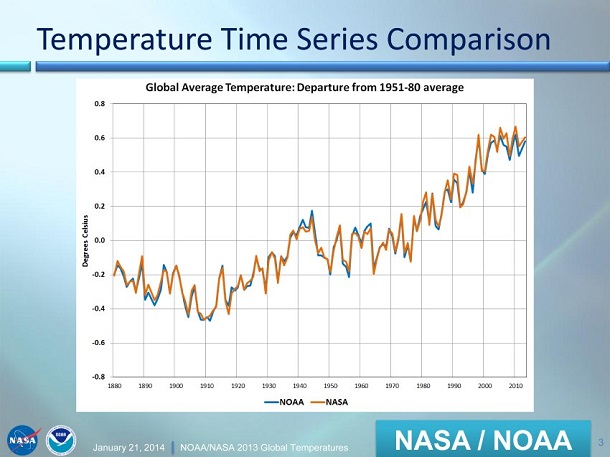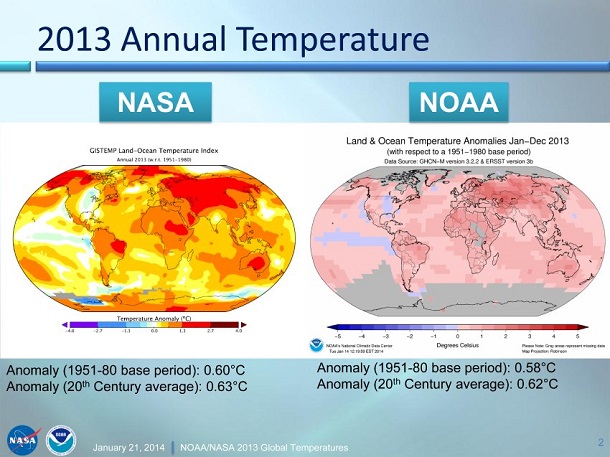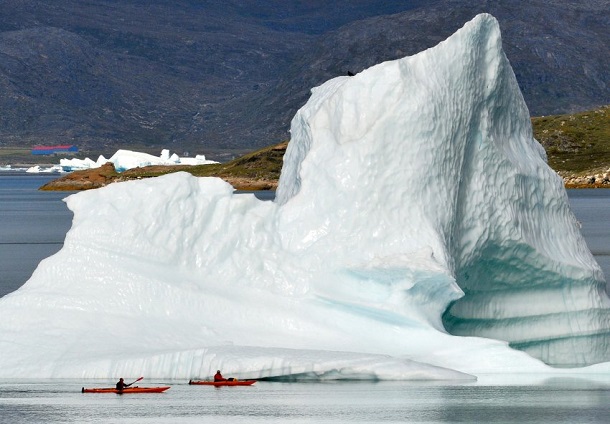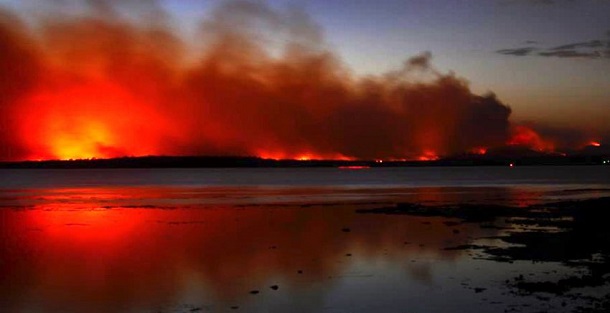The new World Climate Report is a turning point: The UN is cautious with forecasts emphasizes uncertainties praises progress in the fight against warming. The most sensitive issue, however, has been deleted.
The debate around climate boils down to a conflict between rich and poor countries. In Yokohama, Japan, delegates and political scientists to the summary of the UN Climate Reports wrestled a week the second part was published on Monday. Representatives of poorer countries would have demanded, clearly attributable to weather-related disasters to climate change, report participants.
Developing states require as compensation payments of the industrial nations, who are responsible because of their greenhouse gas emissions significantly to climate change. However: scientists find it difficult to attribute specific events to climate change. At most, heat waves, higher storm surges and torrential rains can sometimes bring with warming in context.
In the first part of the World Climate Report, the UN had presented their basic findings last September: In view of rising greenhouse gas emissions, they warned of a significant warming, before rising oceans, shrinking ice sheets and increasing heat waves. In the second part, the researchers are now trying something even more difficult: to predict specific effects of warming. This new way of IPCC surprisingly goes.
1. New UN Climate Report:New way of dealing with facts

The UN climate panel goes in the new report with its body of knowledge differently than before:
* Unlike the previous four reports since 1990, the UN IPCC admits first adaptation measures against climate change, a large room.
* The researchers are observing for the first time advances in the fight against climate change.
* For the first time restricts the IPCC several of its earlier forecasts significantly a, and the Council has become more cautious.
* The UN climate panel names more accurately the uncertainties of his findings than in previous reports.
2. New UN Climate Report:Mention of uncertainties
Journalists were allowed to provide researchers from the UN Intergovernmental Panel on Climate questions about the new report on Sunday . Two hours explained the experts hazards that could threaten in the course of the expected warming. Not for language but came the actual core theme of the new climate report : the uncertainty of the forecasts.
The IPCC has often been accused of hiding the uncertainties. In the new report , however , researchers have endeavored to always provide their statements with a scale for robustness , which should increase confidence in the presentation – even if the summary of the report must put up with the accusation of being too alarmist .
Some predictions , however, appear to be more difficult in the face of almost incalculable influences. No reason not to act , says Chris Field of the Carnegie Institution for Science in the USA , coordinator of the UN report: “The report shows that there is now more need to go to smart ideas rather than absolute certainty of knowledge ,” he says . Humanity must be prepared for change, even if some dangers appeared unpredictable.
3. New UN Climate Report:Warnings are reliable
But in some subjects the gain in knowledge has increased the safety of the warnings. The rising sea level about leaving hardly any doubt that coastal regions and islands are exposed to the increasing risk of higher storm surges. The acidification of the oceans is also considered safe because the formation of acid from CO2 is a well understood principle. Negative consequences for calcareous organisms are likely. Glacier melt is increasingly becoming a problem for millions of people in the Andes and the Himalayas, where the ice is dwindling with the drinking water supply. The shifting of climate zones appear, according to the research status bit iffy: spreading drought regions would result. And the increase in extreme rain is based on fundamental considerations – and is considered almost certain by the IPCC. The fact that heat waves are becoming more frequent as a result of warming, probably even the biggest skeptics seems plausible.
4. New UN Climate Report:IPCC weakens forecasts

Already in its first report in 1990 warned the IPCC before a species extinction due to climate change . The scale would dramatically from 2040 onwards clearly . The losses would possibly huge already from 2018 , it said in 1991 in the scientific journal ” Issues in Science and Technology” , citing the IPCC . So far, however , the IPCC now admits let be traced back not a single extinction of a plant or animal species to climate change.
At most, the disappearance of some amphibians in the South American highlands could perhaps be partly explained by global warming , says the IPCC report . The experience makes careful. The IPCC attested animals and plants , although still a high risk of extinction . However, drastic knowledge gaps could be considerable doubt as to the prognosis.
The prognosis of climate refugees will also be alleviated. Former UN forecasts of 50 million environmental refugees by 2010 proved to be false ; grows in countries of the alleged danger zone even the inhabitants .
Also with other important issues , the IPCC has significantly limited its forecasts . The economic losses are likely to be considerably lower than expected. More frequent drought in North Africa will also appear , according to the report, less safe than before. Are expected also less losses from hurricanes in the North Atlantic than in the past .
5. New UN Climate Report:Tricky topic deleted bioenergy

The question of whether alternative energy could exacerbate food shortages in some regions, the researchers dodged. Actually, the most sensitive issue should perhaps very front in the climate report on page 18 in the Summary for Policymakers are, eg that the cultivation of corn for the production of bioenergy could displace food production locally. The passage but was dropped shortly before the release. Later in the report we have represent the problem then, but do not want to rate, report the authors of the IPCC report. The dilemma is named, but not rated as a risk.
6. New UN Climate Report:Adjusted assessment of human behavior
The main problem of previous climate reports was seen that previous forecasts presuppose people would not react to climate change. “How stupid peasants” would be represented humanity, it was said often. In the new report, but the researchers discuss many different developments – with and without adaptation to rising natural hazards. “Companies have had to constantly adapt to climate variability in the course of history, with varying degrees of success,” says the climate report.
Numerous examples document the fight against weather hazards. “They show that can adapt to climate change function concretely,” says Koko Warner of the University of Uno. Site investigations have shown that especially a functioning weather forecast can prevent much damage.
7. New UN Climate Report:Included effects of other environmental influences
The on-site research has shown that the climate is always only one factor among many. Poverty, backwardness, poor commercial relationships, social unrest or some governments increase the vulnerability to natural hazards dramatically, writes the IPCC. Frequently as never before the IPCC cited the effect of factors other than climate. That about the coasts of Bangladesh increasingly sink into the sea, had to rising water levels largely technical reasons: dams held huge amounts of sand back, the rivers would previously have washed out to sea. The sand is absent as a natural coastal protection.
8. New UN Climate Report:Unsafe influence of climate on crop
Losses in crop yields are expected to warn the IPCC – and thus tightened its previous forecasts. Climate models show that about Southern Europe and South Asia could be reinforced affected by drought. However, the simulation of grain surfaces is practiced only a few years . According to rough models are knitted.
Even the respiration of plants is not yet shown sufficient – but she decides much of the growth . Satellite measurements show that the vegetation has expanded in warmer latitudes , presumably CO2 has at least temporarily as fertilizer. Also how temperature and precipitation affect grain, is still being researched intensively .
No adaptation is in many regions a decline in income from wheat, rice , soybeans and corn to expect up to one-fifth in the course of the century , yet the IPCC stated . Agricultural measures could indeed compensate for the loss largely , and their effectiveness is however ” very variable ” .
[adrotate group=”14″]


